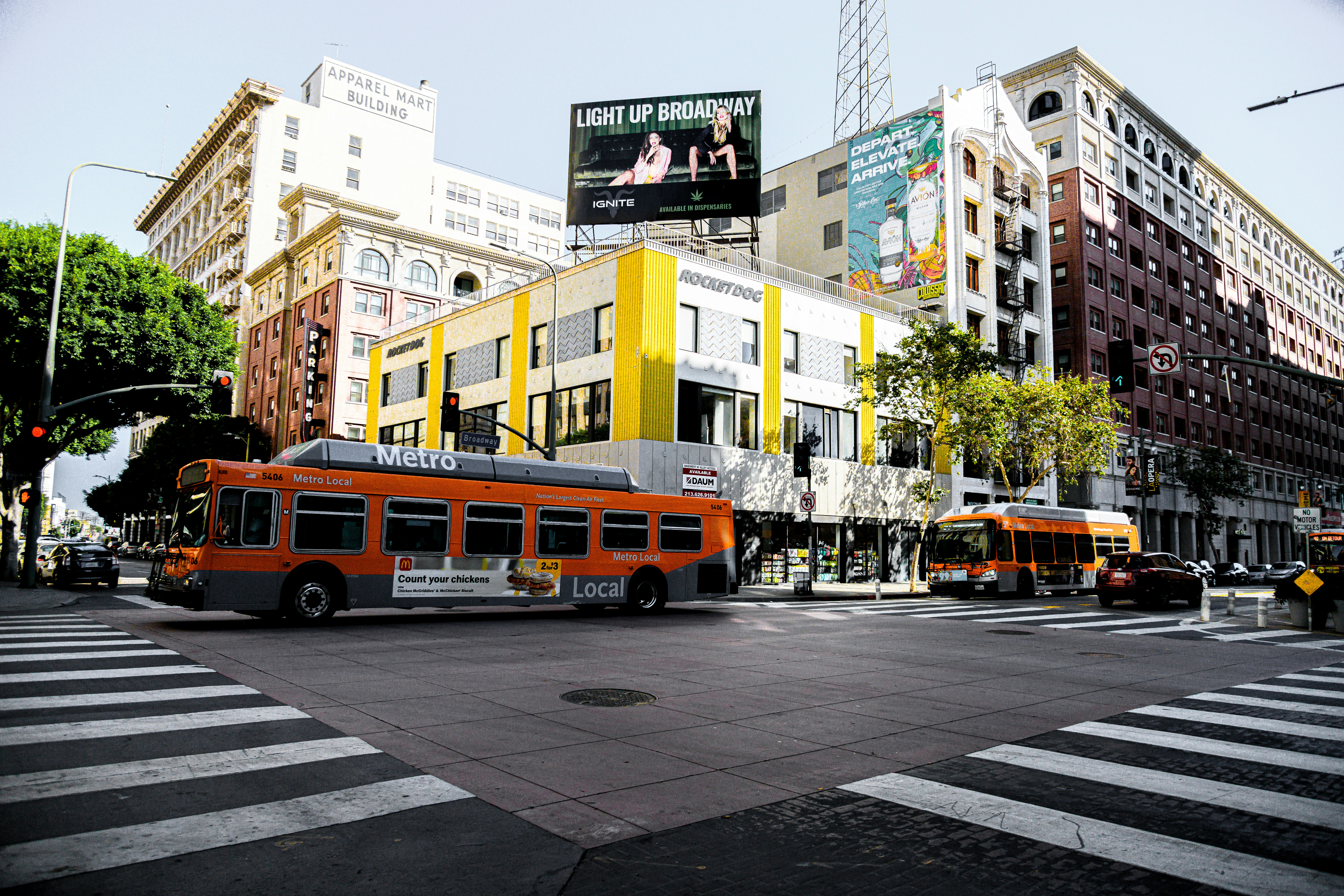Every trip becomes perfect when the transportation is not stressful, convenient, and affordable. Plenty of transferring services operate in Los Angeles, but what are the best ones? In our article, you will find an answer!
Public transport
Los Angeles offers different types of transport for residents and visitors, but the subway and buses stand out from the crowd. Even though the statistic shows that local people prefer their cars while moving within the city, every traveler must know how to use public transport in LA.
Metro
The Los Angeles metro is a convenient way to travel within the city’s county if you do not have a car. The system offers seven rail lines, each having a specific color and a letter of the alphabet as a marking. While planning a personal route to the attractions, consider boarding a train on the Red (B) Line. It has connections with Blue (A), Purple (D), and Expo (E) lines and includes a variety of significant stops for every LA visitor:
- The Walk of Fame;
- Staples Center;
- Grand Central Market;
- Universal Studios;
- The Pantages Theater;
- LA Convention Center.
A one-way trip will cost you $1.75, and obtaining daily, weekly and monthly passes can suit your journey if you stay for a long time in Los Angeles.
Pros of metro:
- Low cost for one ride and convenient passes with unlimited rides/day;
- Famous attractions on one of the lines;
- Connects main city centers like Hollywood, Downton, and Santa Monica.
Cons of metro:
- Only two lines from seven are advantageous for an average traveler;
- Lack of commerce in some metropolitans (small number of shops with products like water);
- The percentage of crime and drug cases increases;
- Low safety level.
Bus
Choose buses as your transportation assistance – and you will unlock more than 160 directions. These vehicles can take you to Hollywood, Downtown, Beachwood Canyon, and more. Metro buses use three colors (orange, red, and blue) to indicate the vehicle’s route and operation area. The price for a one-way ride reaches $1.75 ($1 in some areas), which is convenient for low-budget trips.
The other option is to catch a DASH shuttle, subject to the LA Department of Transportation. The fare is free for Cityride participants and costs 50¢ for regular travelers who pay with cash.
Pros of using a bus:
- Provides a magnificent view of the local attractions and landscape;
- Kindhearted passengers and drivers occur;
- Extremely low cost of one ride.
Cons of using a bus:
- Lack of coverings on many stops;
- Crowdy vehicles even after the peak hour;
- There is a chance to encounter mentally ill or homeless, which you can avoid if you rent a Jeep or take a taxi instead;
- The schedule may be unstable, and passengers wait more than expected sometimes.
Rental cars
In terms of the cost of a ride, public transport wins, but it has massive disadvantages, which make trips mediocre and troublesome. That is why Los Angeles residents prefer to get around by private cars, but what should city visitors do? In this case, vehicle hire can become the best alternative to buses, trains, and taxis.
You can find leading companies like Hertz, Enterprise, AVIS, Dollar, and many others operating in LA. Car rental service prices may reach $23/day minimum, and the maximum cost may be $60/day and higher. There are plenty of tricks on how to rent a Jeep 4×4, minivan, or any other vehicle as cheaply as possible:
- Try aggregators to compare prices;
- Seek programs with discounts;
- Use the benefits of the credit card;
- Book as early as possible.
Pros of hiring cars:
- Unlocks almost every destination in Los Angeles County.
- Allows to avoid crowds and gives more personal space;
- There is no need to rely on a specific schedule.
Cons of hiring cars:
- The prices rise during high demand;
- There can be a shortage of deals;
- Strict terms and conditions in the contract.
Uber
Uber is a famous ridesharing company that allows you to order a car in an app and conveniently travel from one place to another. Nearly 100.000 vehicles run within Los Angeles, so finding one can be quick and without delays.
The cost of one ride depends on your destination and trip time, plus it includes taxes, fees, and other surcharges. After you choose pick-up and drop-off locations, the app will estimate the cost and display it before approval.
Pros of using Uber:
- Finding it is faster than a taxi;
- The app is convenient to use;
Cons of using Uber:
- It is expensive in Los Angeles;
- Sometimes, scams from drivers are possible;
- Drivers can cancel the ride.
Taxi

A taxi is a perfect option for an occasional quick ride from one place to another within the city. Up to 9 providers operate within Los Angeles, and the number of vehicles exceeds 2300. Taxis are not as popular as Uber, but people continue to use them often.
The Bill of Rights for Taxis regulates and determines the rates, so all cabs usually have a taximeter. The base price for one ride commonly reaches $2.85, and each mile costs $2.70. When the delay fee applies, you must pay $0.30/37 seconds and $29.19/hour.
Pros of taking a taxi:
- Encounter qualified drivers;
- Better than using crowded public transportation.
Cons of taking a taxi:
- The price is higher than in Uber;
- A small number of cabs run within LA.













